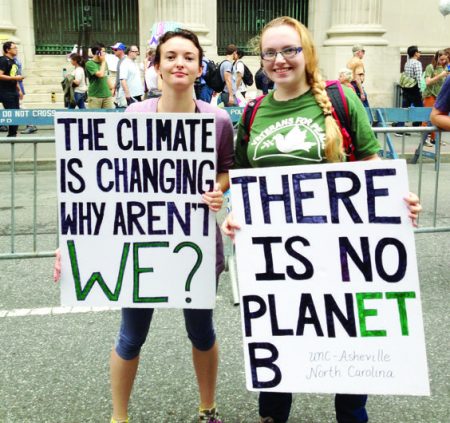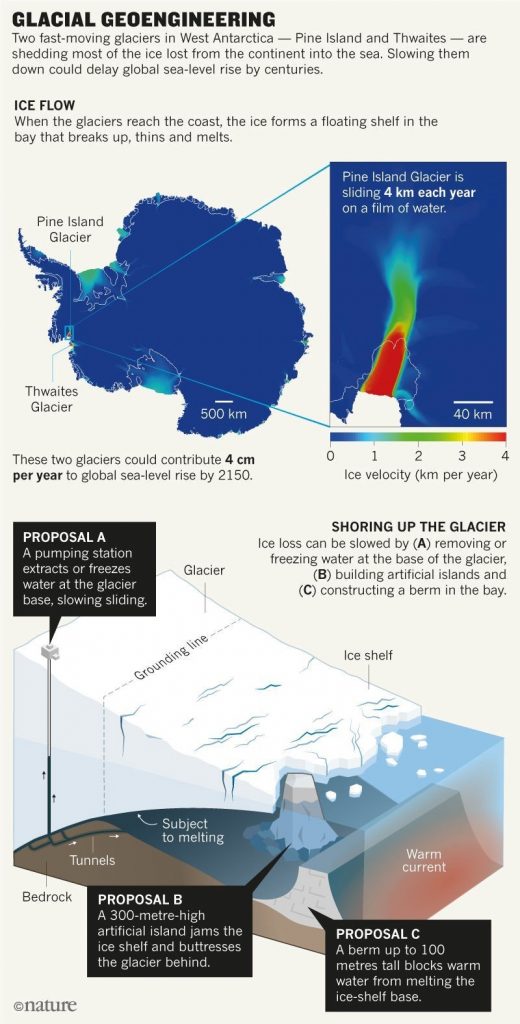May 10, 2018 – While in Aruba last week I met a couple from Kentucky who described the bitter cold and snow they experienced this winter. When I mentioned climate change they looked at me like I was crazy because to them the only climate change is global warming and if it isn’t warm out then the whole idea is bunk. This is not an uncommon state of mind for many who find themselves confused by the two very different terms. Whereas global warming makes us think of a very specific type of climate change, the latter more generic term better describes what is happening here on our planet.
Climate change has always happened throughout our planet’s history. Before our modern civilizations came into existence the planet experienced several million years of episodic ice ages. Prior to that, the climate of most of the planet was warmer than anything we experience today. And going back further Earth has gone from a frozen ball of ice to a tropical sweatbox. The carbon we burn today came from one of those sweatbox periods in the planets’ geological past.
To clarify terminology, when speaking to people on this subject I call what we are experiencing anthropogenic climate change, that is, climate change influenced by human activity. It may sound more high fallutin than plain climate change, but adding anthropogenic points to the problem of the current planetary experience, and it is unprecedented in terms of the speed in which the change is occurring.
In the past few weeks, a number of reports have come out that should be troubling to all of us.
CO2 Continues to Rise
The first was results of tracked carbon dioxide (CO2) in the atmosphere as observed from the top of the Mauna Loa Observatory in Hawaii. Those readings exceeded 410 parts per million over an entire month for the first time since CO2 records started being kept. To put it in perspective, atmospheric CO2 since 1880, when humans started burning a lot more fossil fuels to serve industrial growth, has increased from 280 to plus 410. That’s a 130 parts per million increase in a little more than 130 years. Project that out to the end of the century and CO2 could be as high as 490 parts per million with no human ever having lived through a time in Earth’s past when CO2 levels were that high. And that’s putting a positive spin on CO2 levels. Because in actual fact the rate of CO2 atmospheric growth is accelerating. Steady-state projects of 1 part per million a year underestimate the current reality of increases of 2.5 parts per million annually. That conceivably means we’ll see CO2 levels more than double from the first records kept back in 1880 by 2100. These are indeed uncharted waters. In the Mauna Loa observatory’s announcement, Katharine Hayhoe, climate scientist at Texas Tech University states, “As a scientist, what concerns me the most is not that we have passed yet another round-number threshold but what this continued rise actually means: that we are continuing full speed ahead with an unprecedented experiment with our planet, the only home we have.”
Disease Vectors on the Move
The United States Centers for Disease Control and Prevention (CDC) also gave us troubling news describing changes to disease vectors not normally seen in the Continental United States. New tickborne diseases were reported to be on the rise. In Puerto Rico, mosquito-borne Dengue and Zika were more prevalent. The latest Vital Signs CDC report noted that mosquito, tick and flea-borne diseases had tripled in the United States from 2004 to 2016. That nine new mosquito and tick-spread germs (Zika among them) had been discovered since 2004, and that 80% of disease control organizations within U.S. counties and states lacked the critical skills and capacity to deal with these spreading outbreaks. Why was this happening? As has become the case in almost all U.S. public service sites, there is little mention of anthropogenic climate change. These are words that are being scrubbed clean from the government under the new administration. But there is no doubt that disease vector changes and anthropogenic climate change are inextricably linked.
Nature Ill Adapted to “New Norms”
And to make matters worse, the alteration in weather patterns with exaggerated polar vortices, a Jet Stream that no longer conforms to what we have seen in the past, and even a weakening of coastal ocean currents with their attendant climate impacts, the new norms being experienced are screwing mother nature. Birds are arriving from winter habitats to conditions where feeding is difficult. Where unnatural warming is occurring the timing of insect emergence and bird breeding is completely getting screwed up. If birds are born before insects emerge, there is no food for them. If birds are born after insects have emerged and pupated to become adults, food supply may be insufficient as well. Mounting evidence in recent UK studies shows this to be the case. The animals that rely on seasonal change to mate and rear young are getting screwed.
Mad-hatter Geoengineers at the Tea Party
And then there are the reports of geoengineering experiments, from China’s Sky River artificial rain experiment to a number of U.S. experiments involving sunlight reduction including:
- A plan to spray chemical aerosols into the stratosphere.
- A plan to brighten clouds by spraying saltwater into them.
- A plan to cover Arctic ice with millions of tiny glass spheres.
Even the Antarctic and Greenland are not being spared from geoengineering tamperers who want to wall off the continental and island-based ice sheets from the eroding effects of warming ocean waters. In one case engineers propose building walls of artificial islands to separate land ice from the ocean. In another idea it is proposed that glaciers be shored up by removing water from under the glacier to slow their descent towards the sea, and using the water collected to construct ice berms at the ice face. One proposal calls for artificial islands to jam ice shelves so the land-based glaciers behind cannot move the ocean edge and calve bergs. These ideas appear in a March issue of Nature.
Meanwhile, with all these geoengineering pie-in-the-sky proposals, a science advisor to the U.S. Senate warns that “there is zero governance” around humans tampering to reverse engineer anthropogenic climate change’s worst effects. Whether engineers are attempting to hold back the ice, or manipulate atmospheric processes, or deflect sunlight, there is no one in charge globally or locally. Yet if one or more of these projects is enacted, the consequences of a butterfly effect have not been considered. Change atmospheric processes in one area and who knows what negative consequences will occur somewhere else.










